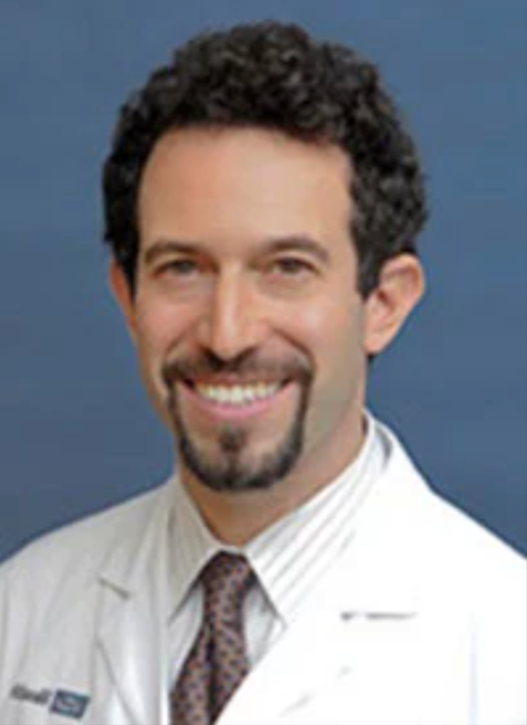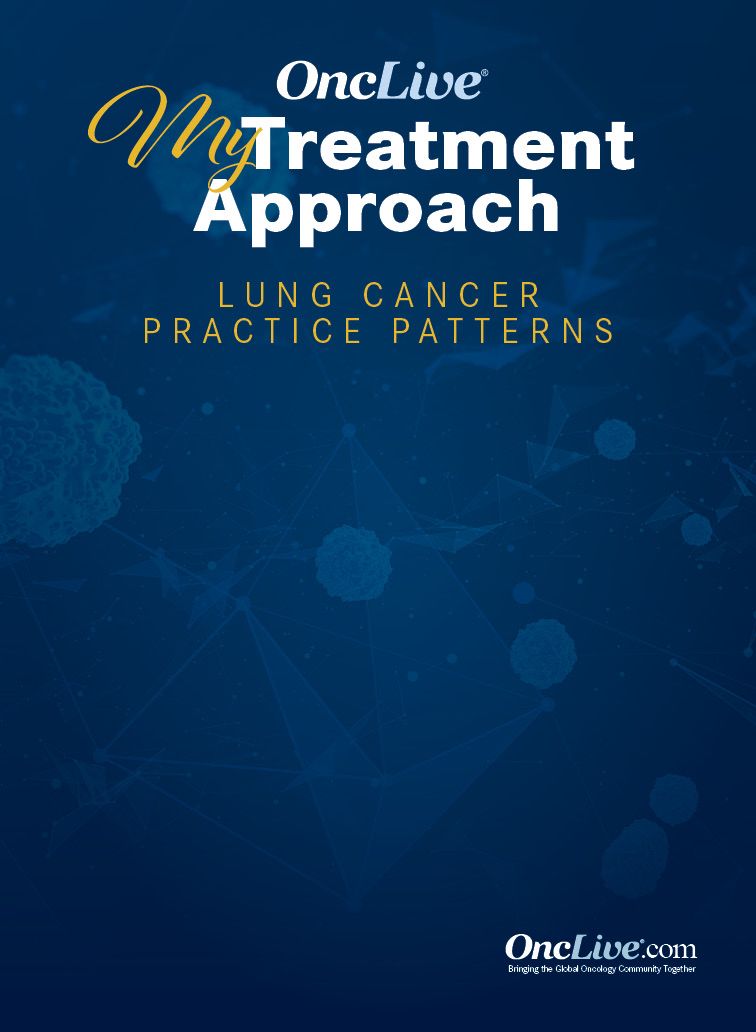Publication
Article
Supplements and Featured Publications
PD-1/Chemo Combos Raise the Stakes in SCLC, as Focus Shifts to Leveraging Molecular Testing
Author(s):
Jonathan W. Goldman, MD, discusses the significance of the phase 3 CASPIAN and IMpower133 trials in small cell lung cancer and efforts made to optimize molecular testing.
Jonathan W. Goldman, MD

Chemoimmunotherapy regimens have shifted standards in the frontline small cell lung cancer (SCLC) treatment, with patients deriving survival, safety, and quality-of-life benefits exceeding those observed with chemotherapy alone, according to Jonathan W. Goldman, MD. Now, efforts are being made to understand how to leverage molecular testing to better tailor clinical decisions for those with SCLC and beyond.
“SCLC, an area that was almost forgotten as a place for drug development, is now finally getting its due. It is a disease that really deserves our attention and our best minds,” Goldman said. “We are really at the beginning of understanding molecular testing in SCLC. When we do test, we often find common mutations like TP53 and retinoblastoma, but [that information does] not often change our treatment. On the research side, we are hoping that we are going to [strengthen our] understanding, and be able to select predictors, prognosticators, and treatment targets.”
In an interview with OncLive®, Goldman, a hematologist and oncologist at UCLA Medical Center, discusses the significance of the phase 3 CASPIAN (NCT03043872) and IMpower133 (NCT02763579) trials in SCLC and efforts made to optimize molecular testing.
OncLive®: What were the key lessons learned from the pivotal CASPIAN study? How has that research impacted practice?
Goldman: CASPIAN is a global, multi-arm trial that accrued more than 800 patients [who required first-line treatment for] extensive-stage SCLC. This is a setting where the standard of care was platinum and etoposide, so that was given on 1 of the study arms. There were 2 immunotherapy combination arms: 1 with the PD-L1 inhibitor durvalumab [Imfinzi], and another with durvalumab and the CTLA-4 inhibitor tremelimumab.
On this 3-arm, non-blinded trial, patients underwent randomization. The patients on the chemotherapy-alone arm received up to 6 cycles of chemotherapy, which is the most complete standard-of-care regimen, and prophylactic cranial irradiation was allowed. On the immunotherapy arms, the patients got 4 cycles of chemotherapy, along with the appropriate immunotherapy, and then went on to receive maintenance therapy with durvalumab.
The readout from this trial included both progression-free survival [PFS] and overall survival [OS] data, with OS serving as the primary end point. In the 4-drug regimen with tremelimumab, no confirmed OS benefit [was reported]; however, in the 3-drug durvalumab arm, there was a survival benefit, [with] a hazard ratio [HR] of 0.75, and a median OS benefit of 2.5 to 3 months, depending on the initial analysis or the updated analysis.
Along with this, a very good safety profile was exhibited. The profile was not significantly different if patients were receiving only chemotherapy, or chemotherapy with immunotherapy. Some additional treatment-associated toxicities [were observed] on the immunotherapy arm, but they were mostly manageable endocrine disorders. Along with a quality-of-life benefit, a delay in worsening symptoms was observed. These were all findings that support durvalumab with chemotherapy being a standard of care for first-line therapy.
Do any key differences exist between the CASPIAN and IMpower133 trials? What factors would lead you to choose one regimen over the other?
We do consider these 2 trials as companion trials that support each other. Up until these 2 first-line trials, the use of immunotherapy in SCLC was not entirely clear. [We saw] some responses, and some evidence of benefit, but nothing that was truly practice changing. Now, we have 2 trials that show that adding immunotherapy to first-line chemotherapy [results in] a benefit in the same range of 2 to 3 months, [which] confirms that [combination] as the standard in all patients who can tolerate it and are appropriate for immunotherapy.
The differences between the trials lie in the details. The CASPIAN trial allowed a choice of which platinum agent was given, whether that was cisplatin or carboplatin. That might be a little more important in Europe, where they tend to use cisplatin more; however, with our modern antiemetics, cisplatin is a very well-tolerated drug. Also, on CASPIAN, the arm of chemotherapy alone was a stricter comparator, allowing 6 cycles of chemotherapy. In the maintenance phase of the CASPIAN trial, treatment went to every 4 weeks instead of continuing at every 3 weeks on the IMpower133 trial. As such, it was a bit easier [in terms of] scheduling, and [patients did not have to feel] as tied down to the infusion center.
The end of the OS curves look a little bit different [for these trials]. At the same time, however, there is not a lot of statistical strength at the end of the curves. If you are looking at the CASPIAN curves, with our enthusiasm and optimism, we see that they do not come together at the end. There seems to be a plateau with an ongoing benefit, with a little bit more than 20% of patients still alive and doing well after 2 years on durvalumab, and that is very encouraging to see.
Regarding factors to consider when selecting treatment, what are some of the strategies being used at your institution to help streamline the molecular testing in patients with stage IV non–small cell lung cancer (NSCLC)? Are any of these approaches applicable to those with SCLC?
The molecular characterization of NSCLC just keeps getting more and more complicated. Every year, new targets and new drugs [emerge]. We must quickly get testing for those new targets up and running. Some of them are quite complex. NTRK testing is probably the most complex, and specifically requires an advanced testing technique. However, even MET mutations, which are not that rare, will not be found on many tests. In many cases, we should be moving to next-generation sequencing [NGS]–based testing; this is a challenge, particularly in first-line patients, where the turnaround time can be 2 to 4 weeks. Many patients are not comfortable waiting more than 1 week to develop a plan, and another week for scheduling, etc.
We have really tried to optimize this at UCLA. Our technique is to use a hybrid approach, doing PD-L1 testing, ALK and ROS1 testing by immunohistochemistry locally, and doing a very rapid-turnaround EGFR test, being that this is the most frequently [observed] targetable mutation. KRAS mutations probably complicate that even further, but once that test is done, we are simultaneously sending off for NGS.
Most importantly, we have carefully worked with the pathology department to develop a diagnostic algorithm that is essentially automated, meaning that as soon as there is a first diagnosis of NSCLC, a whole set of testing kicks in; [this is] somewhat distinguished between squamous and non-squamous [disease]. However, that process is already underway and does not require the back-and-forth between the radiologists who order the biopsy, or the oncologist who may not have met the patient yet. Also, we are often getting full NGS testing results within 2 weeks, which is clinically manageable and reasonable for most patients. This also helps us to avoid the problem of serial single-gene testing, which is no longer feasible as a mechanism of diagnosing our patients now that we are looking for [more than] 10 targets.
The story is not quite so complex when you [consider] squamous cell NSCLC. PD-L1 [testing] is still of the utmost importance. Some [of these] patients [have] KRAS mutations, and some nonsmoker patients will have driver mutations that are treatable, EGFR being the most common. We must be on the lookout for those specifics.
Then that gets even more true when we look into SCLC, where we are really at the beginning of understanding molecular testing. PD-L1 testing is not very fruitful with SCLC; many specimens cannot successfully be tested for [this marker]. When we look at the subset [of patients who] do have successful testing, PD-L1 expression does not seem to be a meaningful predictor of benefit.
Unfortunately, we are still learning a lot about the molecular mutation analysis. There are some rare [times] where we can find a mutation. For example, I once had a single patient [who had] a KRAS G12C mutation. However, that is going to be very rare, and it is not enough to lead to a clear call for widespread NGS testing for SCLC.









